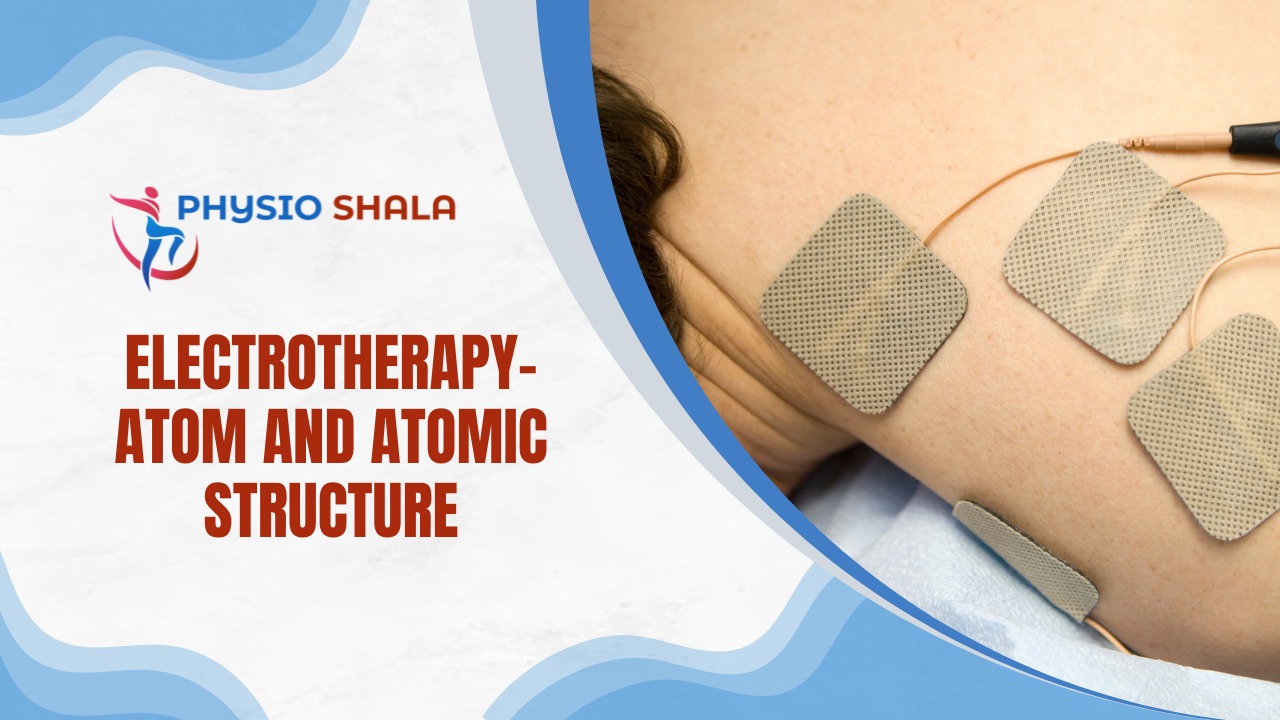Atom
An atom can be described as having a central nucleus surrounded by a cloud of electrons revolving in specific orbits.
The Nucleus Part of Atom
It is the central part of the atom made up of particles that are held together by strong nuclear forces. Two important nuclear particles are- Proton and Neutron.
The Proton Part of Atom
Proton is a large nuclear particle that contains a positive charge opposite to the negative charge on electrons. The positive charge of the proton gives the nucleus an overall positive charge. Normally, atoms are neutral that means for every proton there is an electron thus canceling out each other’s charges.
The number of protons in the nucleus determines the atomic number. Example Hydrogen is the first element and has one proton thus its atomic number is 1.
The Neutron Part of Atom
The neutron is electrically neutral and has a mass almost equal to that of a proton. Usually, in an atom, the neutrons and protons are present in an almost equal number, however, in larger elements neutrons are more than protons. The number of neutrons does not affect the overall charge on an atom, but these large particles influence the weight or atomic mass.
The Electron Part of Atom
Electrons are negatively charged particles that revolve in definite orbits around the nucleus. In a neutral atom, electrons are equal to the number of protons Atomic number also gives the number of electrons in an atom. Electrons are very small than protons but are important in determining the chemical and physical activity of the atom.
Electrons revolve in definite energy shells or orbits around the nucleus called the Principal Quantum Shells. There are 7 principal quantum shells and each shell can be divided into four sub-shells – s, p, d, and f. Electrons fill the lowest energy shell (nearest to the nucleus) first and only fill the other after the previous one is filled. Atoms incline towards having the outer electron shell filled and for that, they may gain or lose electrons.
As mentioned above an atom normally has equal electrons and protons, so if say, an atom gains one electron then it has an overall excess negative charge and becomes a negative ion or anion. Similarly, if an atom loses one electron it has an excess positive charge and becomes a positive ion or cation.
Electromagnetic Radiation of Atom
Electromagnetic radiation is produced by the movement of electrons within the atom. When energy is added to an atom say in form of heat, it causes an electron to jump to a higher energy shell. This electron is said to be in an excited state. When this electron returns to its original shell it dissipates energy in the form of electromagnetic energy- a photon.
This electromagnetic wave that is produced depends on the electron shells involved and this gives rise to the characteristic spectra seen when certain elements are heated, e.g. yellow for sodium.
Current Electricity
Electric current is defined as the flow of charges (generally electrons) in a conductor. The direction of electric current is in the direction of flow of positive charge conventionally, whereas, in electronic current, the direction of current is the flow of negative charge or electrons.
Essential factors for the production of electric current:
- A potential difference between two points
- A conducting pathway between the two points having a potential difference
The current will flow only for as long as the above two conditions are maintained. To maintain the potential difference between two points and keep the current flowing battery or dynamo is used.
Difference of Potential & Electromotive Force
The electric potential of a body is its electrical condition as compared to the neutral potential of the earth. A body with an excess of electrons is negative and bodies deficient in electrons are positive. If two bodies are charged with different quantities of electricity, the one with greater charge will have greater potential.
A potential difference exists between similar bodies having different quantities of charge by electricity. If a conducting connection is established between the two bodies, the electrons will from the body having more negative charge to the body having a less negative charge. Electron flow will continue till both the bodies have equal charge.
The force producing this electron movement is termed the electromotive force or EMF and it is measured in volts (V) similar to the potential difference. The greater the potential difference the greater the EMF.
Capacitance
It is the ability of a body to hold an electric charge and depends on the material and surface area of that body. Capacitance is inversely related to the potential, i.e., the larger the capacitance of a body, the smaller the potential developed by a given charge. For example, if 20 coulombs are used to charge two objects with different capacitances, then the repelling power or the potential developed by the smaller object will be greater than the larger object. Unit of capacitance is microfarad.
The capacitance of an isolated conductor is related to its capacity to store charge inside it. After a limited charge is given to that conductor, it results in an excess charge being discharged through the air.
References –
https://pubmed.ncbi.nlm.nih.gov
https://radiopaedia.org/articles

